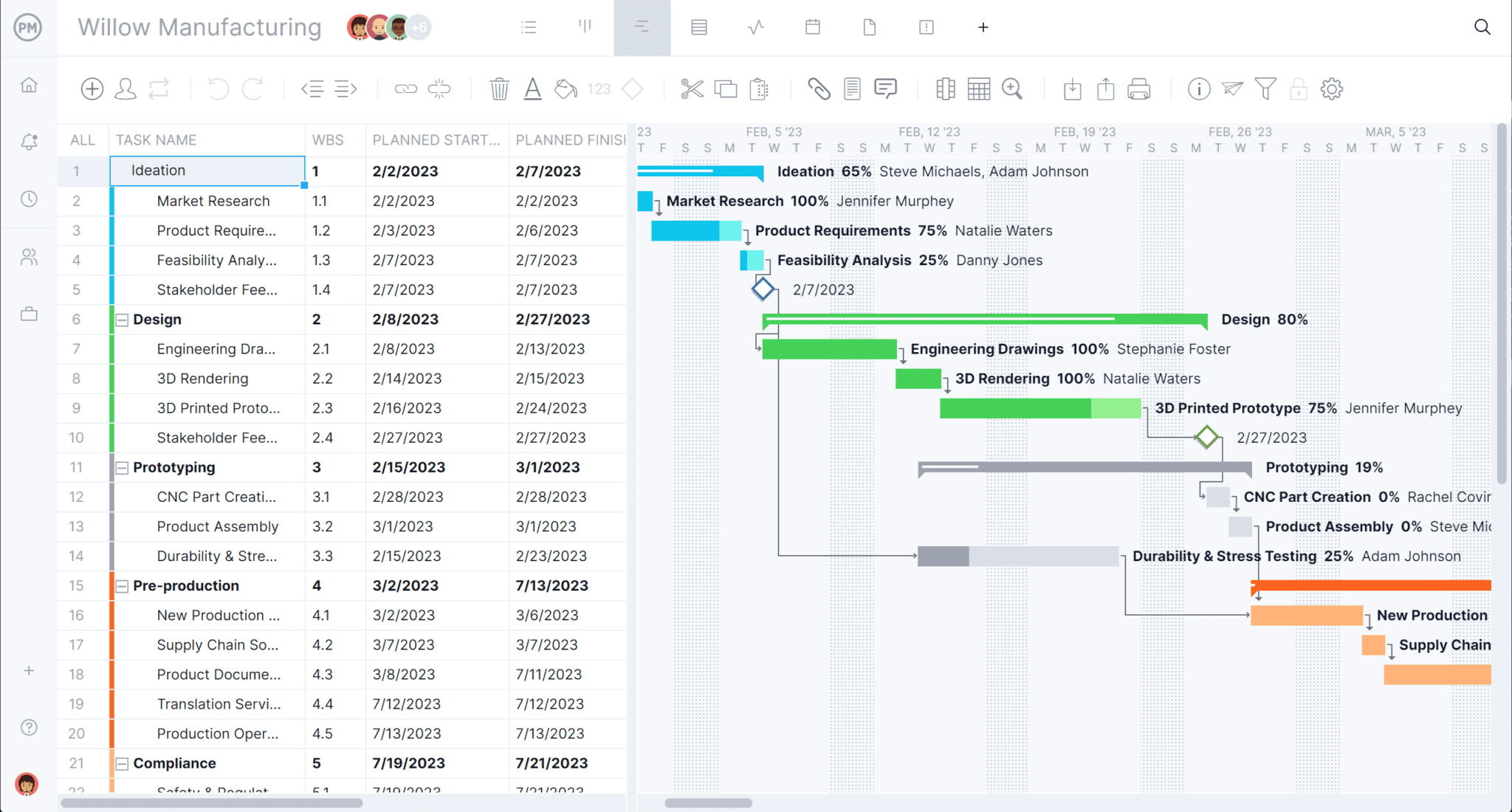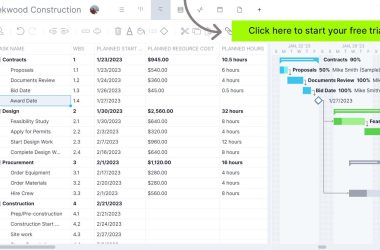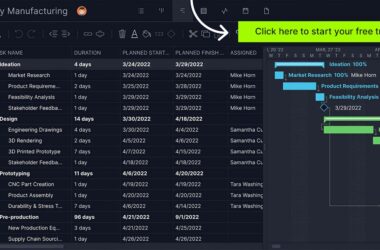Fast, cheap or good — choose two. Are you tired of hearing that? One of the biggest challenges that every project manager faces is project constraints. Not only do project constraints limit a project, but they can quickly endanger its success. This is why it’s essential to know all of the possible constraints, their influences on one another and the project management tools that address those constraints.
What Are Project Constraints?
A project constraint in project management is anything that restricts a project’s scope. It threatens a project’s speed and quality and can cause it to run over budget. While there are many possible constraints, the most common is referred to as the triple constraint.
Through the years, several project constraints models have been developed to help project management professionals to define and better understand how to manage them. However, the most widely used model is the triple constraints of project management.
The Triple Constraint or Iron Triangle Model
Every project manager knows (and often fears) the classic triple constraints of project management.
This project constraints model was initially proposed by Dr. Martin Barnes, project management consultant and president of the Association for Project Management (APM) who first presented the model in 1969, which later would be widely spread by the Project Management Institute (PMI), one of the leading project management certification organizations.
It consists of three main focus areas for project managers, which are time, scope and cost. If these three variables are managed correctly, the project is likely to succeed.
- Time: What’s the deadline for delivering the output?
- Scope: What exactly is the expected outcome?
- Cost: How much money is available to achieve this outcome?
If you change one side of this project management triangle, it will impact the other two. If you can cover the triple constraint, you’re more likely to deliver a successful project. We’ll explore these and other project constraints examples in more detail below
How to cover the triple constraint is tricky, but the right project management software can help. ProjectManager is a work and project management tool that captures real-time data for more insightful decisions about project management constraints. Project managers can use our reporting tools to dive deep into the data and filter reports on status, portfolio, tasks, costs and more to understand what’s on track and what isn’t. These reports are easy to share with stakeholders to provide a quick update. Get started with ProjectManager today for free.
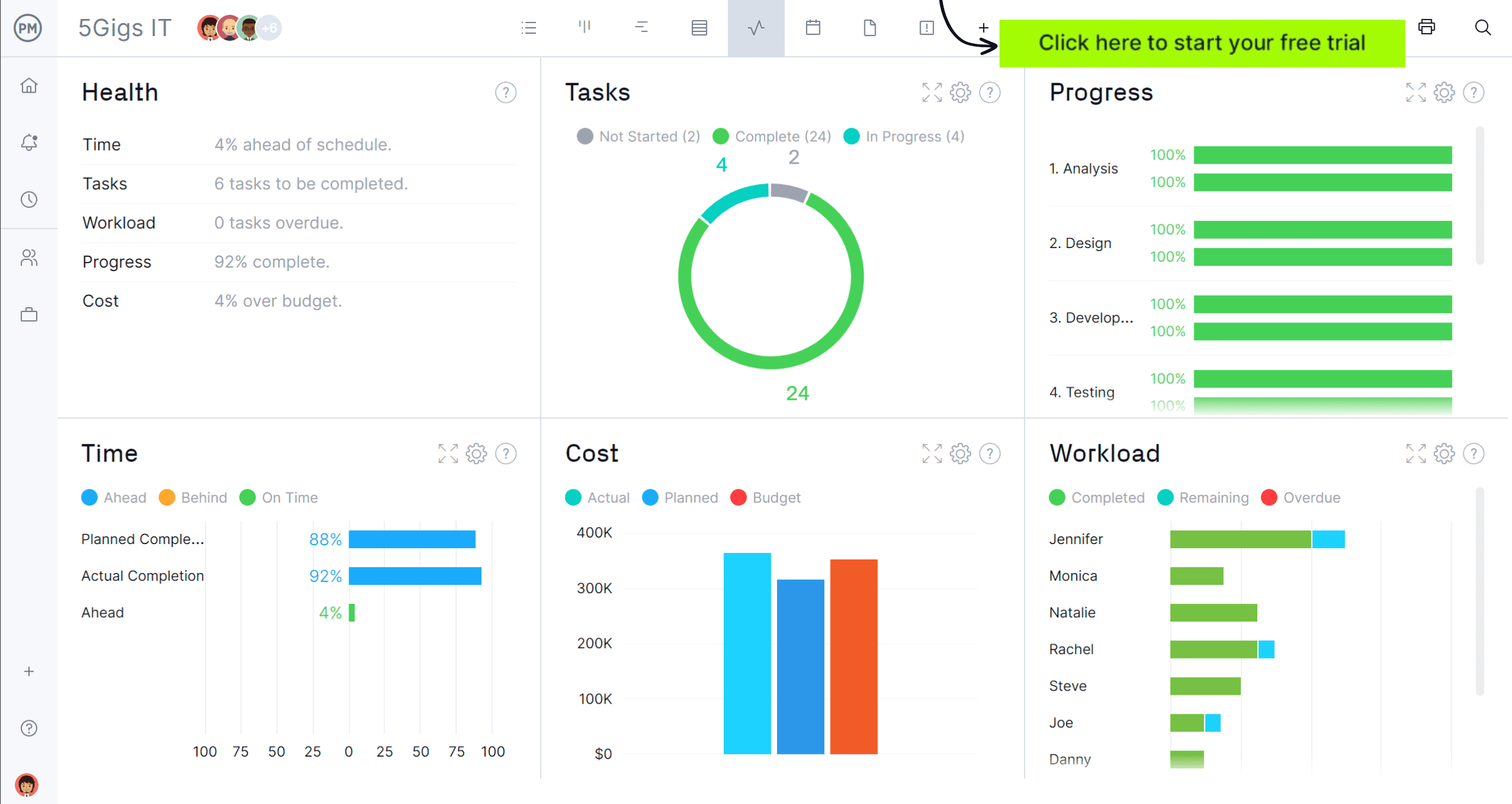
10 Project Constraints Examples
A project is often defined as successful if the project’s objectives are achieved by the deadline and completed within budget. Apart from time, scope and cost, 10 additional constraints limit the process of properly accomplishing the project’s goals.
1. Cost
Your project needs resources such as labor, materials and equipment, all of which cost money. As a project manager, it’s your responsibility to make sure that you accurately estimate your project costs during the planning phase and before execution. That’s when you’ll create a project budget that covers all of your expenses. If you fail to define a sufficient project budget, your project could fail.

2. Time
To properly manage the time that’s available to execute a project, you must create a schedule that defines a timeline for the execution of your project tasks. A project schedule also defines the resources that are needed for each particular project activity. Time is one of the most critical project constraints because if it’s not managed properly, it might affect other constraints such as scope and quality. Failing to keep track of time could result in missed deadlines and reduced project scope. Even worse, it could reduce the quality of your deliverables.
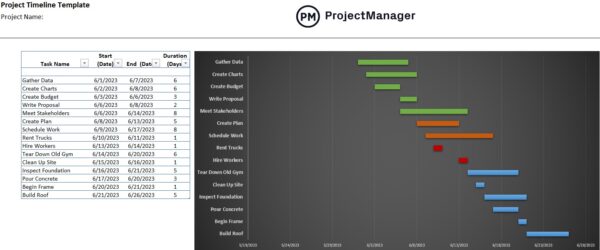
3. Scope
The project scope refers to all of the work to be performed in a project. It’s important to define the activities, deliverables and milestones in addition to what won’t be done to set clear expectations with stakeholders. Project managers use a work breakdown structure to break down the project scope into smaller, more manageable chunks.
This is one of the most important project constraints because every project, no matter its size, complexity or industry, will have a scope of work.
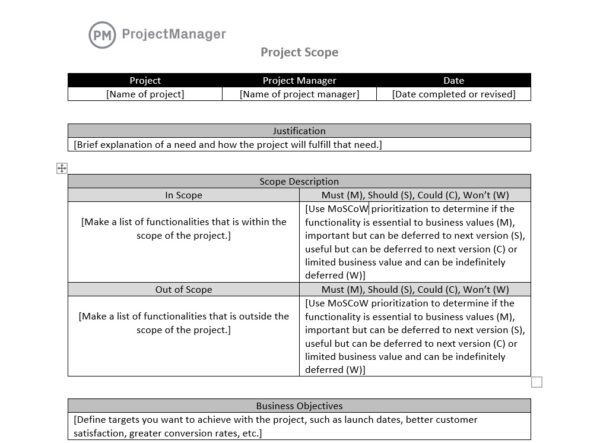
4. Resources
Resource management is critical for delivering projects successfully. The amount of money that’s available for achieving the desired outcome may restrict the use and acquisition of resources which creates a separate project constraint.
Sometimes, even an infinite amount of money doesn’t allow you to acquire the specific resources you need. For example, it could take longer than you expected to receive a physical resource in the project (such as a chip) which causes you to miss the deadline. If this resource is essential to the project, you’ll have to sacrifice hitting the deadline as no reasonable amount of money could reduce the delivery time.
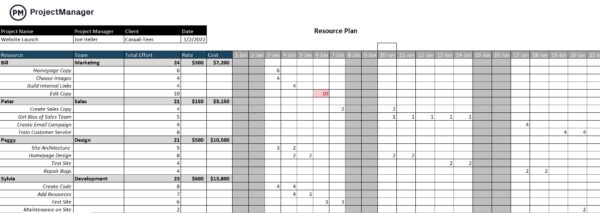
5. Risk
Managing project risks is an important task for project managers, but what does this term actually mean as a project constraint? You can estimate the probability that a risk will have an impact on your project. Perhaps you’re creating a wireframe for your website and you decide to skip the client review because you’re running late. In this case, there’s a risk that the client will reject your final web pages.
Of course, you can control risk to a certain extent. For instance, you could decide to avoid the risk and insist on the review step. But this decision affects your timeline and your related costs since the client would review each of your designs and a project manager needs to oversee this process.
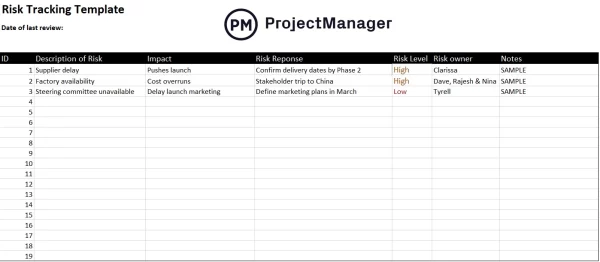
6. Quality
While this project constraint is quite similar to scope, it’s slightly different as scope defines the specific desired outcome. For example, your project’s scope may involve creating 10 web pages. Quality concentrates on the attributes of each of these web pages. When thinking about project quality, ask yourself, “how closely does the outcome match the expectations?”
In our example, the quality doesn’t define the number of web pages, but there could be a quality tolerance regarding the number of words. Perhaps you’ve requested 1,000 words with a quality tolerance of +/- 100 words. If a webpage contains 900 words, you’d approve it, but if another webpage only contains 850 words, you’d reject it.
Quality assurance interrelates with the other constraints. Let’s assume you’re running out of time and need to meet a certain due date. You could meet the deadline by enlarging the quality tolerance and decreasing the number of words to 800.

7. Sustainability
One of the project constraints that is often left off the list is sustainability. It can be considered one of several ways, affecting how projects are planned, executed and delivered. Sustainable practices, such as on materials used, can limit options for design and implementation. This can lead to higher costs and planning for a more eco-friendly project can extend timelines, not to mention sourcing challenges and the expertise required for sustainability needs.
8. Strategic Alignment
Another project constraint is strategic alignment, which influences project selection, execution and overall success. Since projects must align with organizational goals and objectives, when a project diverges from this it can be curtailed or deprioritized. Resources are going to be allocated to those projects that are closely aligned with strategic goals. There’s also the issue of tight deadlines that must be met to achieve strategic initiatives or take advantage of market opportunities, which can compromise quality.
9. Compliance & Regulatory Requirements
Understanding compliance and regulatory requirements is also crucial to the success of the project. There are laws and regulations at the local, state and federal level that will apply to the project. Industry-specific regulations will also impact the work, as well as environmental, health and safety requirements. Depending on the project, there are quality assurance standards that must be met and regular testing to ensure that compliance has been met with those benchmarks.
10. Safety Considerations
Safety issues are often folded into compliance and regulatory requirements, but they deserve their spot on this list of project constraints. These impact the success of the project, but also the well-being of the team. Therefore, risk assessments to identify potential hazards associated with the project should be done, for example regularly evaluating the project site for physical, chemical and biological hazards. There are also local, national and industry standards that must be adhered to. Some workers might have to wear personal protective equipment. There should be training for competence, safe work practices and emergency preparedness to prevent potential issues.
How to Manage Project Constraints
Managing project constraints is fundamentally how you manage a project. You need to monitor and track project constraints through the project’s life cycle and catch anomalies to resolve them quickly. Managing constraints keeps your project on track and within budget. Here are six ways to manage your project constraints.
- Cost: A cost management plan is a strategic plan for your project budget. It’s a four-prong approach that takes into account resource planning, cost estimation, budgeting and cost control. Yes, it’s a plan, but it’s applied through the course of the project to help document expenses and keep your cost constraints in check.
- Time: A time management plan is a method of tracking time spent on a task and the progress made in your project. It involves planning an accurate schedule and then monitoring and controlling the schedule to make sure your actual time aligns with your time management plan. Time is one of the main project constraints and the key to project success.
- Scope: A scope management plan involves all of the processes included in executing a project. The scope acts as a roadmap for the project and outlines its limits. Managing the scope project constraint is important as changes are always impacting scope. Without a plan in place, projects can quickly become derailed.
- Quality: A quality management plan is in place to help the project manager and project team meet the expectations of the stakeholders. You can deliver a project on time and even under budget, but if the quality doesn’t meet expectations, it’s considered a failure. A stakeholder or customer will review the plan to make sure the project restraint is accurate.
- Risks: A risk management plan helps to identify and respond to potential issues that might arise in the project. These risks can impact the project constraints so it’s important to identify what might happen, assess the impact on the project, create risk mitigation or contingency plan and always monitor for these or other risks so that you can deal with them properly.
- Resources: A resource management plan is used to guide how project resources, such as teams, equipment and materials, are categorized, allocated, managed and released. Without managing your team and their necessary resources, the project suffers.
Balancing Project Constraints
Besides defining procedures, guidelines and activities to manage project constraints, project managers can also balance them. Considering the importance of project constraints to delivering a successful project, the project manager must understand these steps to manage them.
First, you need to plan. The above plans are developed during the planning phase of a project, however, you need to also plan each project phase in the project’s life cycle. This usually starts with a work breakdown structure (WBS) to identify each task and deliverable in the project.
Next, you’ll need to look at each of the project constraints and determine how they might impact your project. This is where risk management and resource-leveling will come into play. Resource leveling is adjusting the start and finish dates for resource constraints to balance the demand for those resources. You’ll also need to have your quality management plan in place as discussed above.
Keeping your team’s workload balanced is also key. If you overburden them with tasks, they’re going to get burned out. This means you’ll lose productivity from team members, a factor that’s critical to overall project success. Managing your resources properly is one of the most important aspects of project constraints.
Outside of the management plans needed to manage your project constraints, there’s also communication to consider. Having clear, transparent and regular communication between the project team can help you run a smooth project. It’s crucial to know the different constraints of a project as the only way to control them is to understand them. When making important decisions, don’t solely consider time, scope, and budget, but also factor in quality, risk, resources, sustainability, organization, methodology and customer satisfaction.
ProjectManager Helps You Manage Constraints
Constraints must be managed in any project. To do so, you need project management software that gives you the ability to plan, track and adapt to constraints as your project develops. ProjectManager is award-winning software that helps you manage every aspect of a project, including its constraints.
Make More Accurate Plans
If you’re not keeping a careful eye on your budget, money will bleed a project dry. ProjectManager helps you plan your project with online Gantt charts that schedule tasks over a timeline and track the cost associated with each of those tasks. This way, you’re never caught off-guard. You can also link dependencies to avoid bottlenecks that can take you off track.
Resource Management Tools
Another way for costs to get out of control and put a dent in your schedule is when resources aren’t properly managed. ProjectManager gives you real-time dashboards to monitor your resources. Whether it’s the costs associated with suppliers and vendors or your project team and their task allocation, you’ll see all data in real-time.
Speaking of teams, their time needs to be managed. ProjectManager has timesheets that make it simple for them to submit and for managers to approve. Plus, in-depth project reporting keeps you on top of your project constraints. There are many ways to view and control constraints on ProjectManager.com.
Balancing all the constraints within project management requires robust tools for tracking and reporting. ProjectManager is an online project management software with real-time dashboards and reporting tools to monitor project progress, budgets and more to ensure that your projects reach successful conclusions. See for yourself and take a 30-day free trial.
The post Top 10 Project Constraints Examples appeared first on ProjectManager.




